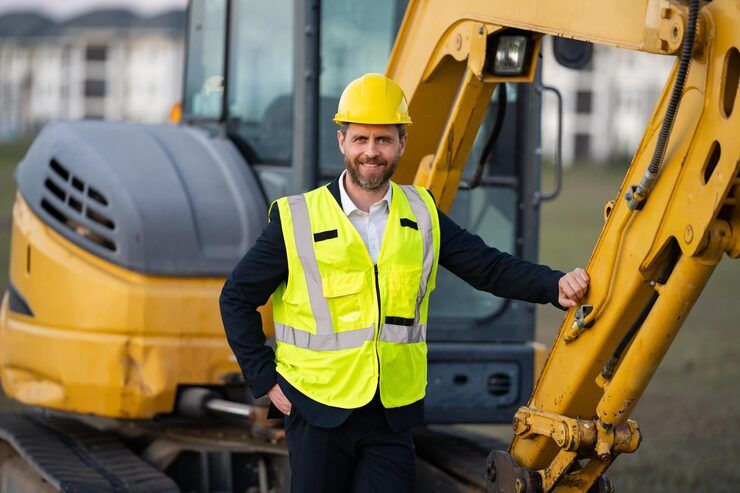Heavy equipment operator training is designed to prepare individuals to safely and effectively handle large machinery used in construction, mining, road building, and other industrial projects. These machines include bulldozers, excavators, loaders, cranes, and forklifts, all of which require specialized skills.
Importance
The importance of heavy equipment operator training has grown significantly in today’s construction-driven economy:

-
Workforce Demand: Infrastructure development projects around the world continue to rise, creating a strong need for skilled operators.
-
Safety: Construction sites present risks, and trained operators are essential to minimize workplace accidents.
-
Efficiency: Skilled operators improve productivity by reducing downtime and ensuring proper use of machinery.
-
Compliance: Employers must meet safety standards and regulations, many of which require documented operator training.
-
Career Opportunities: Training opens pathways for individuals seeking stable, skilled trade jobs in construction and related industries.
| Key Benefit | Impact |
|---|---|
| Safety | Reduces risk of accidents and injuries |
| Productivity | Ensures smooth and timely project execution |
| Job Readiness | Provides access to high-demand employment |
| Compliance | Meets legal and workplace safety standards |
This training affects not only operators but also employers, contractors, and government projects where safety and efficiency are priorities.
Recent Updates
Several updates in 2023–2024 have shaped how heavy equipment operator training is delivered and recognized:
-
Simulator-Based Training: Advanced simulators with virtual reality (VR) have become more common, allowing trainees to practice in safe, controlled environments before working on real sites.
-
Digital Certification Platforms: Many training centers now issue digital credentials, making it easier for employers to verify operator qualifications (2023 trend in North America and Europe).
-
Sustainability Focus: Training increasingly includes eco-friendly practices such as fuel-efficient operation and proper idle-time management, aligning with global climate goals.
-
Shortage of Skilled Workers: Reports in 2023 highlighted labor shortages in construction, leading governments and private companies to expand training initiatives.
-
Hybrid Learning Models: Post-pandemic, more training programs now combine online theory lessons with in-person practical sessions.
These changes reflect the industry’s effort to make training more accessible, technology-driven, and environmentally conscious.
Laws or Policies
Heavy equipment operator training is closely tied to regulations and safety laws, which vary by country:
-
United States: The Occupational Safety and Health Administration (OSHA) sets safety requirements for construction machinery. Certain machines, like cranes, require operators to have certification under OSHA standards.
-
Canada: Provinces regulate operator licensing; for example, British Columbia requires certification through the BC Association for Crane Safety.
-
European Union: EU directives emphasize safety management and operator competence, with member states implementing local training standards.
-
Middle East (UAE, Saudi Arabia): Rapid infrastructure development has led to stricter safety compliance rules requiring certified operators for large machinery.
-
India: The Directorate General of Training (DGT) and state-level agencies oversee vocational training, including heavy equipment operation.
Overall, laws emphasize that operators must be properly trained and certified before working on active sites, protecting both workers and the public.
Tools and Resources
Several tools and platforms can help individuals and employers with heavy equipment operator training:
-
OSHA Training Resources – Safety standards, handbooks, and compliance guides.
-
National Association of Heavy Equipment Training Schools (NAHETS) – Offers accredited programs and resources in the U.S.
-
Construction Plant Competence Scheme (CPCS, UK) – Provides certification schemes and testing standards.
-
Virtual Training Simulators – Tools like CM Labs and Caterpillar simulators offer realistic practice.
-
Learning Apps & e-Modules – Online platforms providing quizzes, safety modules, and training materials.
| Resource | Use | Audience |
|---|---|---|
| OSHA Guides | Compliance and safety | Employers, trainees |
| NAHETS | Accredited programs | U.S. trainees |
| CPCS | Certification system | UK operators |
| VR Simulators | Hands-on virtual practice | Training centers |
| Online Apps | Theory preparation | Beginners |
These resources help both aspiring operators and construction companies ensure that training meets professional and legal standards.
FAQs
1. What types of machines are included in heavy equipment operator training?
Training usually covers excavators, bulldozers, cranes, backhoes, loaders, forklifts, and sometimes specialized equipment like pile drivers or graders.
2. How long does training take?
Programs vary from a few weeks for entry-level courses to several months for advanced certifications, depending on the equipment and regulations.
3. Do I need a license to operate heavy equipment?
Yes, in most countries operators need certification or a license. Requirements differ by region and equipment type.
4. Can training be done online?
Theoretical components, such as safety and maintenance basics, are often available online. However, practical hands-on training with actual machines or simulators is essential.
5. What career opportunities exist after training?
Trained operators can work in construction, mining, road building, shipping yards, and government infrastructure projects. Demand remains high globally.
Conclusion
Heavy equipment operator training is an essential step for ensuring safe, efficient, and compliant operation of machinery in construction and related industries. With growing global infrastructure needs, updated training methods such as simulators, hybrid learning, and sustainability-focused modules are becoming standard.
Whether pursued for career growth or workplace compliance, operator training remains a vital component of modern industrial development. By leveraging available tools, understanding regional laws, and completing certified programs, individuals and companies can ensure both safety and productivity on job sites.